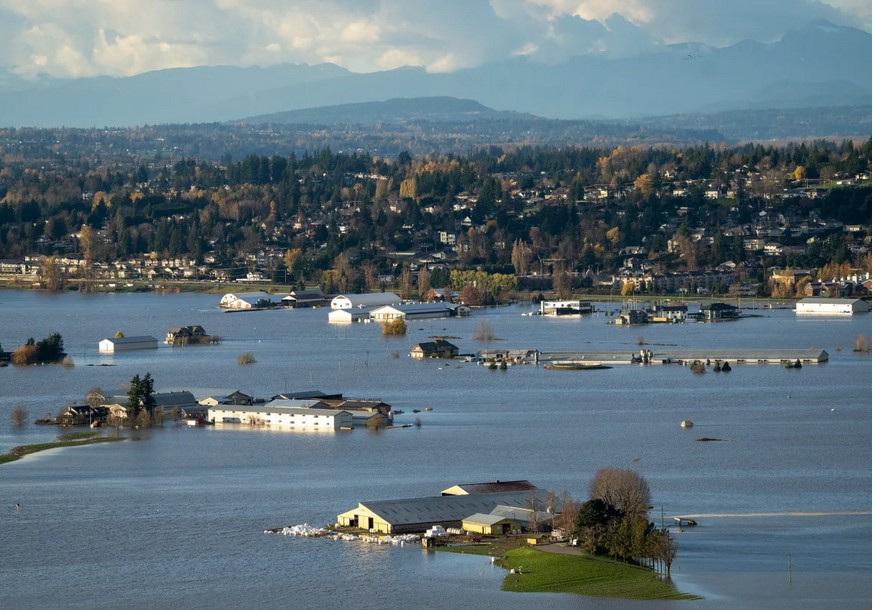Disaster Mitigation and Adaptation Fund: Applicant guide

Introduction
Communities across Canada have experienced – and will continue to experience – significant weather-related events or disasters triggered by natural hazards. The impacts of climate change are evident, including observed changes in air temperature, precipitation, snow and ice cover, and others.
In response to these threats, through the Disaster Mitigation and Adaptation Fund (DMAF), the Government of Canada has committed to invest in public infrastructure that mitigates the potential economic, environmental and social impacts of climate change, and strengthens community resilience to disasters triggered by natural hazards and extreme weather events.
This Guide has been prepared to support your project application process. It contains information on types of eligible projects and costs; steps to follow to submit an application; and key requirements to be considered for federal funding under the DMAF.
1.0 What is the DMAF?
The DMAF is a national, competitive, and merit-based contribution program intended to support infrastructure projects designed to mitigate current and future climate-related risks and disasters triggered by natural hazards, such as floods, wildland fires, droughts and seismic events.
The overall objective of the DMAF is to strengthen the resilience of Canadian communities at risk of infrastructure failure that could result in:
- threats to health and safety;
- threats to critical infrastructure, including interruptions in essential services;
- significant disruptions in economic activity; and/or
- increasingly high costs for recovery and replacement.
1.1 What types of projects does the DMAF fund?
Eligible infrastructure projects under the DMAF include new construction of public infrastructure and/or modification or reinforcement of existing public infrastructure including natural infrastructure that prevent, mitigate or protect against the impacts of climate change, disasters triggered by natural hazards, and extreme weather.
- Projects must have a minimum of $1 million in total eligible costs to be considered for funding.
1.2 How much funding is available?
In 2018, the Government of Canada launched the DMAF, committing $2 billion over 10 years to the program. In Budget 2021, an additional $1.375 billion in federal funding over 12 years was announced to renew the DMAF. Of this, a minimum of $138 million is allocated to Indigenous Recipients. As part of the National Adaptation Strategy, in November 2022, the DMAF received an additional $489.1 million over 10 years in funding, which will furthersupport communities across Canada.
Recipients. As part of the National Adaptation Strategy, in November 2022, the DMAF received an additional $489.1 million over 10 years in funding, which will further support communities across Canada.
2.0 Who can apply?
2.1 Eligible Applicants
Eligible Applicants include:
- A province or territory; or a municipal or regional government established by – or under – provincial or territorial statute;
- A public sector body that is established by – or under – provincial or territorial statute or by regulation; or is wholly-owned by a province, territory, municipal or regional government;
- When working in collaboration with a municipality, a Canadian public or not-for-profit institution that is authorized, under the terms of a Canadian provincial, territorial or federal statute; or Royal Charter, to deliver post-secondary courses or programs that lead to recognized and transferable post-secondary credentials.
- A private sector body, including for-profit organizations and not-for-profit organizations. In the case of for-profit organizations, they will need to work in collaboration with one or more of the entities referred to above or an Indigenous Recipient listed below.
Eligible Indigenous Applicants, include:
- An Indigenous governing body including, but not limited to:
- A band council within the meaning of Section 2 of the Indian Act;
- A First Nation, Inuit or Métis government or authority established pursuant to a Self-Government Agreement or a Comprehensive Land Claim Agreement between His Majesty the King in right of Canada and an Indigenous Peoples of Canada, that has been approved, given effect and declared valid by federal legislation; or
- A First Nation, Inuit or Métis government that is established by or under legislation whether federal, provincial or territorial legislation that incorporates a governance structure.
- An Indigenous Development Corporation and
- A not-for-profit organization whose central mandate is to improve Indigenous outcomes.
Find out More Here
-
Start Date
Jan 16, 2023
-
End Date
Jul 19, 2023
